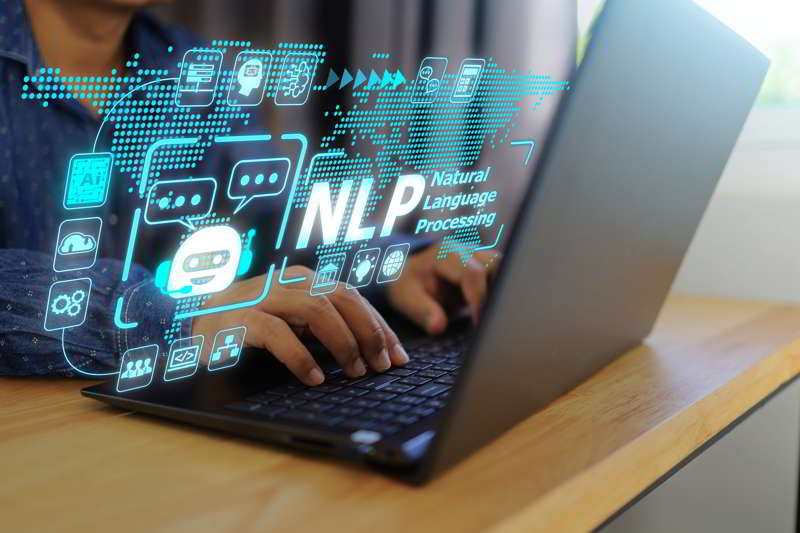How To Integrate NLP Chatbots Into Business Workflows
Incorporating natural language processing (NLP) chatbots into your workflows is important in automating processes for efficiency, productivity, and business growth. These chatbots can understand and talk like humans, making tasks smoother and interactions with customers better. They can answer questions, take orders, and book appointments. NLP chatbots can also provide personalised answers and quickly sort out issues to make the overall customer experience better.

In this article, we’ll explore the steps involved in seamlessly incorporating NLP chatbots into your organisation’s workflows.
What Are NLP Chatbots?
NLP chatbots are computer programs that simulate human-like conversation by understanding and generating natural language. They analyse user input, recognise intents, extract key information, manage dialogue flow, and generate appropriate responses. These chatbots leverage NLP techniques such as NLU, intent recognition, entity extraction, dialogue management, and response generation. They can adapt and learn from interactions over time, finding applications in customer service, virtual assistants, and other domains.
Steps to Integrate NLP Chatbots Into Business Workflows
NLP chatbots are scalable solutions that can handle increasing workloads without significant additional resources. As business needs grow, chatbots can accommodate higher volumes of interactions seamlessly.
Below are the steps on how you can integrate NLP chatbots into your business workflows:
1. Define Objectives and Use Cases
Before implementing NLP chatbots, it’s essential to define your objectives and identify relevant use cases clearly. Determine the specific tasks or processes where chatbots can add value. For instance, you could deploy a chatbot to handle customer inquiries, automate appointment scheduling, or assist employees with HR-related queries. By outlining your goals upfront, you can ensure that the NLP integration aligns with your business objectives and delivers tangible benefits.
2. Choose the Right NLP Platform
Selecting the appropriate NLP platform is crucial for the success of your chatbot integration. Evaluate your different options based on accuracy, scalability, customisation capabilities, and integration capabilities with existing systems. Popular NLP platforms can provide robust frameworks for building intelligent chatbots. Choose an NLP platform that best suits your requirements and offers the flexibility to adapt to future needs.

3. Design Conversational Flows
Effective chatbot interactions rely on well-designed conversational flows. Map out the dialogue sequences that the chatbot will engage in to fulfil various user requests or tasks. Design intuitive user interfaces that guide users through the conversation while ensuring a natural and engaging experience. Consider incorporating visual elements such as buttons, cards, and quick replies to facilitate interaction and improve usability. Test different conversation paths to refine the chatbot’s responses and optimise user engagement.
4. Integrate with Existing Systems
To seamlessly integrate NLP chatbots into your business workflows, it’s essential to connect them with your existing systems and databases. This integration allows chatbots to access relevant information and perform tasks more efficiently. Whether it’s accessing customer data from CRM systems, retrieving product information from databases, or interfacing with enterprise applications, ensure that the chatbot can seamlessly communicate with backend systems via APIs or webhooks. By leveraging integration capabilities, you can enhance the chatbot’s functionality and provide users with personalised experiences.
5. Implement AI-driven Automation
NLP chatbots can significantly enhance operational efficiency by automating repetitive tasks and workflows. Identify manual processes that AI-driven chatbots can automate, such as order processing, ticket routing, or data entry. By offloading these tasks to chatbots, businesses can reduce response times, minimise errors, and free up human resources for more value-added activities. Machine learning (ML) algorithms continuously improve your chatbot’s performance and accuracy over time, ensuring optimal efficiency and productivity gains.
6. Provide Multichannel Support
In today’s omnichannel landscape, customers expect seamless interactions across multiple touchpoints, including websites, mobile apps, social media platforms, and messaging channels. Ensure that your NLP chatbot supports a variety of communication channels to reach customers wherever they are. Whether it’s integrating with messaging apps or embedding chatbots directly into your website or mobile app, provide a consistent and unified experience across all channels. This multichannel approach enhances accessibility and enables your business to engage with customers in various channels.
7. Monitor Performance and Iterate
Continuous monitoring and optimisation are essential for maximising the effectiveness of NLP chatbots in business workflows. Track key performance metrics including user engagement, response times, task completion rates, and customer satisfaction scores. Analyse user feedback and usage patterns to identify areas for improvement and iterate on the chatbot’s design and functionality. Leverage analytics tools and A/B testing techniques to experiment with different strategies and optimise the chatbot’s performance over time. By adopting a data-driven approach, businesses can ensure that their chatbots evolve to meet evolving user needs and business requirements.
Conclusion
Integrating NLP chatbots into business workflows offers a myriad of benefits, ranging from improved customer service to increased operational efficiency. By following the above best practices, you can successfully deploy chatbots that enhance user experiences, streamline processes, and drive business growth in the digital age. Embrace the power of NLP chatbots to transform your organisation’s workflows and stay ahead of the competition in today’s fast-paced business environment.


